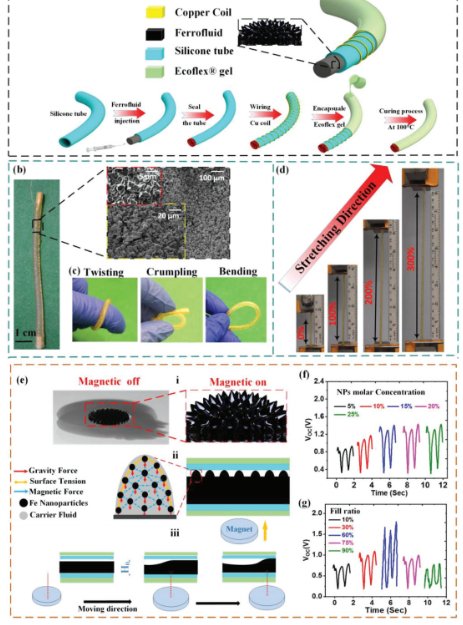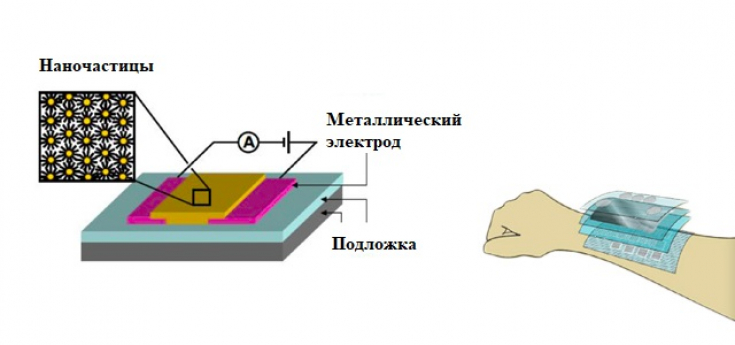The development of sensors that can simultaneously monitor multiple hazardous situations in real time imposes a growing need. Multifunction sensors with these features are problematic and difficult to implement.
In this context, the creation of a multimodal ferrofluid-based triboelectric nanogenerator — FO-TENG is reported, which has the ability to perceive various stimuli, such as a strong magnetic field , noise level, and falling or drowning. The
FO-TENG consists of a deformableferrofluid filled elastomeric tube as a triboelectric layer surrounded by patterned copper wire as an electrode, giving FO-TENG superior water resistance, compatibility and extensibility.
In the article estet-portal.com you can get acquainted in detail with the multimodal triboelectric nanogenerator based on FO-TENG ferrofluid.Sensitivity of artificial leather

pressure, heat, cold and vibration — it is an essential security feature that most people take for granted. But burn victims, those with prostheses, and others who, for one reason or another, have lost skin sensation cannot take it for granted and are often injured unintentionally.
A new type of sensor could lead toartificial skin that could one day help to get rid of the feeling of being a victim and protect humanity. The researchers wanted to create a sensor that could mimic the sensitive properties of the skin.
Such a sensor must be capable of detecting pressure, temperature and vibration.Iron oxide nanoparticles in silicone are a promising material for skin replacement.
Follow us on Faux leather shows advantages over real leather
Scientists have created a sensor with a silicone tube wrapped in copper wire and filled with a special liquid composed of tiny iron oxide particles only one billionth of a meter long, called
nanoparticles.
Nanoparticles are rubbed inside the silicone tube and create an electric current. The copper wire surrounding the silicone tube picks up the current as a signal. When this tube hits something, it experiences pressure, the nanoparticles move, and the electrical signal changes. The sound waves also create waves in the nanoparticle liquid, and the electrical signal changes differently than when a tube collides.The artificial skin has the ability to additionally detect magnetic fields, sound waves, and mechanical damage.
Researchers have found that
magnetic fields also change the signal, unlike pressure or sound waves. Even a person moving around while wearing the sensor changes the electrical current, and the team found that they can distinguish between electrical signals caused by walking, running, jumping, and swimming.
Obtaining stem cells for nano-lipofilling: anti-age novelties

Because the rubber outer surface is completely
sealed and waterproof, it can also serve as a sensor to alert parents if their child has fallen into deep water in a pool, for example.
The idea was to make a durable skin that could detect many dangers.The team has not yet tested the sensor for its response to heat and cold, but they suspect it will be sensitive to these environmental parameters as well. Next step — make the sensor in a
flat configuration, more like skin, and see if it still works.
Thank you for staying with estet-portal.com. Read other interesting articles in the "Cosmetology" section. You may be interested in









Add a comment